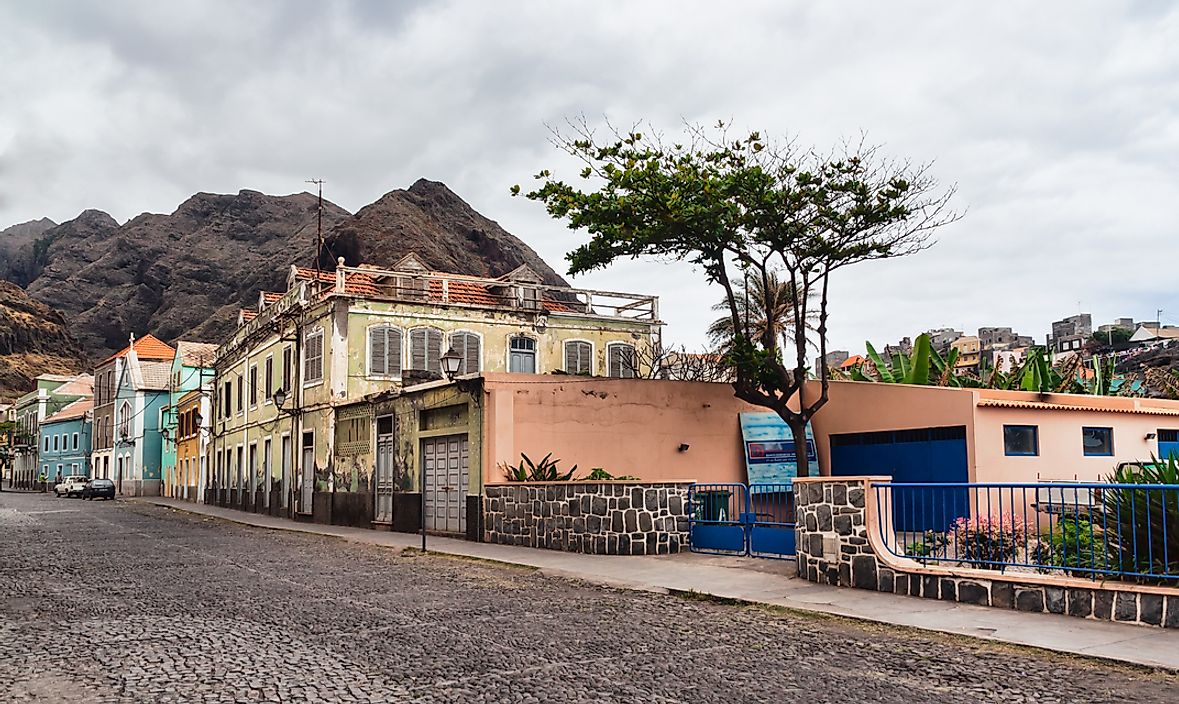The Culture Of Cape Verde

Cape Verde has a rich and eclectic culture that is influenced by both African and European cultures.
7. Social Beliefs And Customs
Although the Cape Verdean law recognizes gender equality, in practice, the society is still one which experiences sexism. Although women are respected for the immense workload handled by them in their homes and farms, female representation in white-collar jobs and politics is rare. The law of the country does not recognize polygamy as legal. However, this does not mean that it does not exist in practice. Due to the popularity of polygamy in the country, households led by single women are common. Marriages here are usually less formal and often involve the woman leaving her maiden home to live with her boyfriend. Four years of cohabitation with the same partner gives the relationship a status of common-law marriage. Traditional homes in Cape Verde have several generations living within one home and children are reared communally. It is customary for the parents to throw a party seven days after the birth of a child. Guests gather in the baby’s room at midnight praying for the child’s safety and success.
The people of Cape Verde are known to be very hospitable and generous in nature. They treat their guests lavishly and consider it rude to eat without sharing food. Thus, consuming food in public buses or on the street are considered to be bad habits. The Cape Verdeans are also physically demonstrative when greeting each other. They greet each other for lengthy periods, often stopping to inquire about the health and well-being of each and every member of the family.
6. Religion, Festivals, And Holidays
Over 93% of the population of Cape Verde are Catholic Christians, and 5% are Protestants. The rest of the population are either adherents of other Christian denominations or are affiliated to Islam and the Bahá'í faith. Non-believers are rare in Cape Verde.
Since Christianity is the dominant religion in Cape Verde, Christian festivals are celebrated with great festivities in the country. The secular festivals and holidays observed here include the New Year’s Day on January 1, Independence Day on July 5, and the Amilcar Cabral Day on January 24. The last one celebrates the birth of Amilcar Cabral, a respected and loved freedom fighter of Cape Verde. The islands of the country also celebrate numerous other music and dance, food, and beach festivals that serve to attract tourists to Cape Verde.
5. Music And Dance
Cape Verde is internationally known for Morna, a type of folk music that originated in the country. The music usually uses lyrics in Cape Verdean Creole. Cesária Évora is an international superstar from Cape Verde who specializes in Morna. The lyrics of songs in Morna are based on a variety of themes like love, mourning, and patriotism. The Boa Vista island is believed to be the origin of Morna. The songs are accompanied by one or more of the instruments like clarinet, piano, violin, guitar, and cavaquinho. Other indigenous forms of Cape Verdean music are batuque, mazurka, funaná, and coladeira.
4. Literature And Arts
Cape Verdean literature is among the most significant in West Africa. In fact, after Mali, the literature of Cape Verde is considered to be the second richest in West Africa. The literary works in the country are mostly in Portuguese while Creole, French, and English have also been used. Eugénio Tavares, a Cape Verdean poet, is known for his monumental work that has gained him international recognition. The literature of the country flourished during the fight for independence in the 20th century. It was during this time that Claridade, a review related to the country’s freedom, was launched. After independence in 1975, Cape Verdean literature continued to expand into newer territories. Female writers like Eileen Barbosa and Vera Duarte also became popular during this time.
Cape Verdeans practice a wide array of folk arts. Crochet work and weaving are practized by the women while men engage in wood-carving, ship-modelling, and the production of musical horns from shells.
3. Cuisine
Corn (Milho) and beans (feilao) constitute the staple of the Cape Verdean diet. Other popular foods are rice (arroz), cassava (mandioca), and fried potatoes (batatas fritas). Most commonly consumed vegetables include squash, kale, and carrots. Non-vegetarian food items include a variety of fishes and crustaceans like tuna, sawfish, lobsters, and meats like grilled pork and chicken, and also eggs. The cachupa is a unique stew prepared in Cape Verde. A large number of ingredients like green bananas, sweet potatoes, yams, onions, mashed maize, and squash are added to the stew. The grogue is a popular alcoholic beverage consumed in Cape Verde. This strong rum is manufactured from sugar cane by the distillation process. The Santiago and Santo Antao islands are the main grogue production centres. Imported olives and Alentejo wines, a legacy of the Portuguese rule in Cape Verde, are also highly popular in the country. Tropical fruits are also commonly available here.
2. Clothing
Most Cape Verdeans dress in Western-style clothing. Used clothing from the developed countries like the US and the European nations are often sent here to meet the needs of the locals. The panos are unique strips of cloth that have been woven on the narrow loom of Western Africa. These are adorned by women and are often utlilized in carrying babies or act as dancing sashes.
1. Sports
Football is the most popular sport in Cape Verde followed by basketball. Volleyball, futsal, and golf are the other popular sports played in the country. The first sport to be introduced in Cape Verde was golf and tennis that were promoted by the British and passengers whose ships passed through Cape Verde. Windsurfing, fishing, surfing, hiking, and kite surfing, and the ouri, a traditional African board game, are popular pasttime activities of the Cape Verdeans.











